The list of 'all sorts of things' was ending when the Eye of
the Archer (Ain Al Rami, ν
Sagittarii) was at the Full Moon, viz. in July 2.
|
He huru o te me'e [E:68-69]
Huru.
Custom, tradition, behaviour, manners, situation,
circumstances; poki huru hare, child who
stays inside (to keep a fair complexion); te huru
o te tagata rivariva, a fine person's behaviour;
pehé te huru o Hiva? what is the situation on
the mainland? Huruhuru, plumage, feathers
(the short feathers, not the tail feathers), fleece
of sheep. Vanaga. Samoa: sulu, a torch; to
light by a torch; sulusulu, to carry a torch;
susulu, to shine (used of the heavenly bodies
and of fire). Futuna: susulu, the brightness
of the moon. Tonga: huluaki, huluia,
huluhulu, to light, to enlighten;
fakahuhulu, to shine; iuhulu, a torch or
flambeau, to light with a torch. Niuē: hulu,
a torch; huhulu, to shine (as the moon).
Maori: huru, the glow of the sun before
rising, the glow of fire.
Churchill 2.
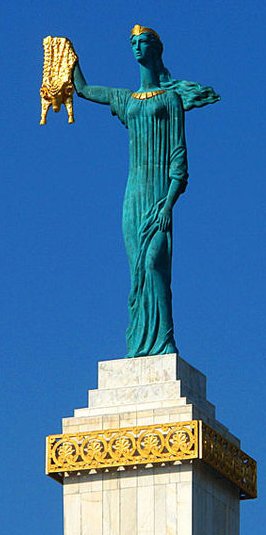 |
|
1 |
*83 |
he |
ngaatu |
a Oti. |
|
1 |
*84 |
tavari |
|
1 |
*85 |
riku |
|
1 |
*86 |
ngaoho |
|
1 |
*87 |
naunau. |
|
1 |
*88 |
uku koko |
|
1 |
*89 |
nehenehe |
|
1 |
*90 |
poporo. |
|
1 |
*91 |
kavakava atua |
|
1 |
*92 |
kohe. |
|
1 |
*93 |
nehenehe [sic!] |
|
1 |
*94 |
pua |
|
1 |
*95 |
harahara |
|
1 |
*96 |
hua taru. |
|
1 |
*97 |
makere |
|
1 |
*98 |
hata. |
|
1 |
*99 |
tuere heu. |
|
1 |
*100 |
tureme |
|
1 |
*101 |
matie. |
|
1 |
*102 |
pua nakonako. |
|
1 |
ALHENA |
ipu ngutu |
|
Alhena (γ
Gemini) was at the left foot of Pollux.
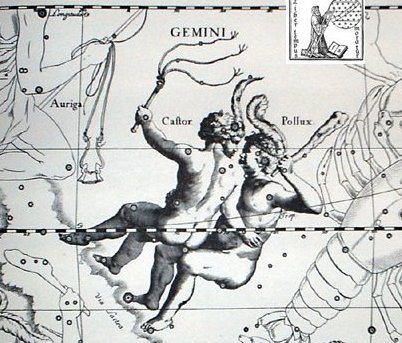
|
 |
69
|
 |
|
MIRA (*33) |
ALHENA
(*103) |
|
April 23 (113) |
July 2 (183) |
|
KHAMBALIA
(*216) |
AIN AL
RAMI (*286) |
|
Oct 23 (296) |
Jan 1 (366) |
|
There were 21 items in the huru list, which means the Full Moon
would have been at day 366 (Jan 1) - 20 = 346 at the
beginning of the list:
|
1 he ti. |
1
he kape. |
|
1 he hauhau. |
1 he mahute. |
|
*79 |
*80 |
*81 |
*82 |
|
June 8 |
9 (525) |
June 10 (161) |
11 |
|
Dec 8 (524 -
182) |
9 (7 * 7 * 7) |
Dec 10 (161 +
183) |
11 (345) |

|
1 he mahute. |
1 he ngaatu |
1
tavari |
|
... The
planting of rushes in the crater lakes is
supposed to have been the work of the culture
hero Ure. Proceeding from Anakena,
Ure planted the top part of the plant in
Rano Aroi, the stem in Rano Raraku,
and the bottom part in Rano Kau (ME:364)
...
Gaatu, totora reed.
Vanaga. Gaatu 1.
Bulrush, reed. 2. (gatu). Churchill.Gatu.
Gaatu, totora reed. Gatu: 1. To
press, to tighten, to squeeze. 2. To pack tight.
3. To pull suddenly, to give a jerk. I ka
hakarogo atu, ku eke á te kahi, he gatu mai,
as soon as he felt the tuna be, he pulled in
[the line] with a sharp jerk. 4. To kick. 5.
E gatu te hagu, to wait for something
impatiently (gatu, breath). 6. Shortly,
very soon. He tu'u gatu, he is coming
shortly, he is just about to arrive. Vanaga.
Bulrush, reed. Gaatu (gatu) 1. To
feel of, to pinch, to throttle with the hands,
to touch, to press (gaatu); gatuga,
pressure; gatugatu, to trample down. T
Mgv.: natu, to press out linen, to
squeeze a person or a sore place. Mq.: natu,
to pinch. Ta.: natu, to pinch, to bruise.
2. To suppurate. 3. Gatu mai gatu atu,
sodomy. Gatua (gatu 1), tractable,
to press. Churchill. Scirpus riparius
var. paschalis. Barthel 2.
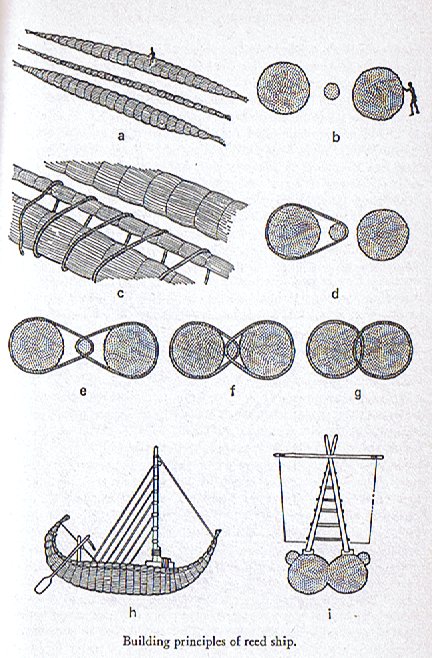
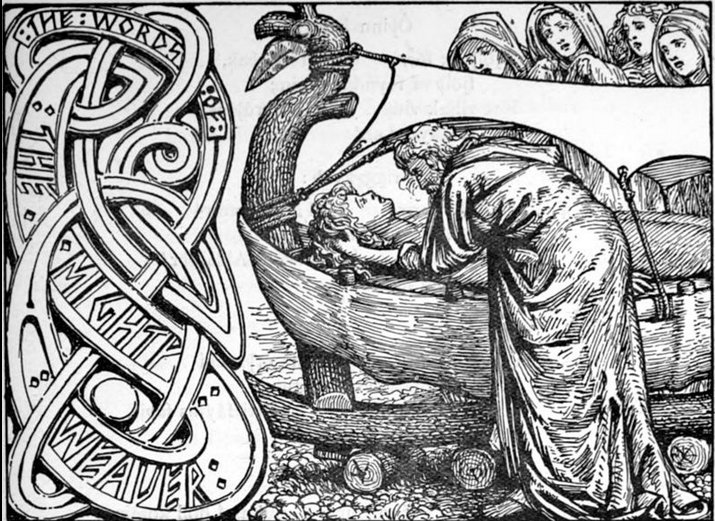
... All
this, which in so many ways parallels the
normal imagery of the Old World culture-hero
myths, telling of the one who is gone,
dwells underground in a happy, timeless
land, as lord of the realm of the happy
dead, like Osiris, but will rise
again, we can read
without surprise. But what is surprising
indeed was the manner of Quetzalcoatl's
actual return. The priests and astrologers
did not know in what cycle he was to
reappear; however, the name of the year
within the cycle had been predicted, of old,
by Quetzalcoatl himself. Its sign was
'One Reed' (Ce Acatl), which, in the
Mexican calendar, is a year that occurs only
once in every cycle of fifty-two. But the
year when Cortes arrived, with his company
of fair-faced companions and his standard,
the cross, was precisely the year 'One
Reed'. The myth of the dead and resurrected
god had circumnavigated the globe
...
|
1 |
Cipactli (alligator) |
11 |
Ozomatli (monkey) |
|
2 |
Ehecatl (wind) |
12 |
Malinalli (grass) |
|
3 |
Calli (house) |
13 |
Acatl (reed) |
|
4 |
Cuetzpallin (lizard) |
14 |
Ocelotl (jaguar) |
|
5 |
Coatl (serpent) |
15 |
Cuauhtli (eagle) |
|
6 |
Miquitztli (death) |
16 |
Coz-cacuauhtli
(buzzard) |
|
7 |
Mazatl (deer) |
17 |
Ollin (movement) |
|
8 |
Tochtli (rabbit) |
18 |
Tecpatl (flint knife) |
|
9 |
Atl (water) |
19 |
Quiahuitl (rain) |
|
10 |
Itzcuintli (dog) |
20 |
Xochitl (flower) |
|
20 * 13 = 260 and 13 * 13 = 169 =
260 - 91.
 |
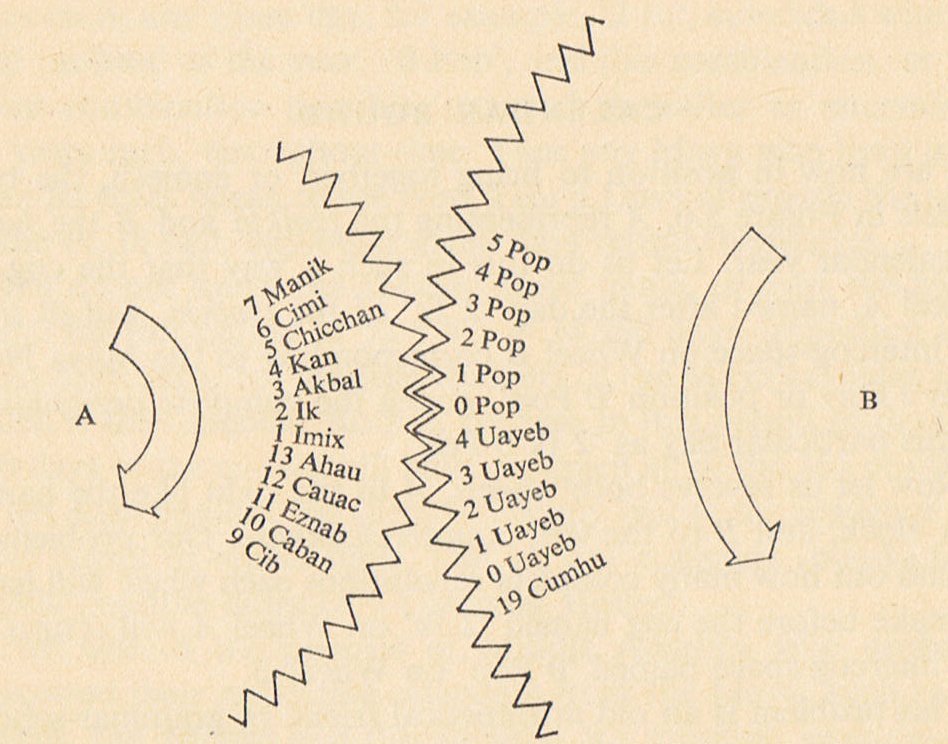
|
|
APRIL 8 |
9 (*19) |
10 (100 = 88
+ 12) |
 |
 |
 |
|
Ga1-18 |
Ga1-19 |
Ga1-20 |
|
KHUFU
MINTAKA (Belt)
=
δ
Orionis,
υ
Orionis (82.4),
χ
Aurigae (82.5),
ε
Columbae (82.6)
*41 = *82.4 - *41.4 |
KHAFRE
Al Hak'ah-3 (Brand) /
Mrigashīrsha-5 (Stag's Head) /
Turtle Head-20 (Monkey) /
Mas-tab-ba-tur-tur (Little Twins)
ARNEB =
α Leporis,
CRAB NEBULA
= M1 Tauri
(83.0,
φ¹
Orionis (83.1),
HEKA = λ Orionis,
ORION NEBULA
= M42
(83.2),
φ²
Orionis (83.6),
ALNILAM (String
of Pearls)
= ε Orionis
(83.7) |
MENKAURE
Three Stars-21 (Gibbon) /
Shur-narkabti-sha-shūtū-6 (Star in the Bull
towards the south)
/ ANA-IVA-9 (Pillar
of exit)
HEAVENLY GATE
= ζ Tauri,
ν
Columbae (84.0),
ω
Orionis (84.2),
ALNITAK
(Girdle)
= ζ Orionis,
PHAKT (Phaet)
= α Columbae
(84.7) |
|
June 11 |
12 (163 = 136
+ 27 = 263 - 100) |
13 (*84) |
|
°June 7 |
8 |
9 (*80) |
|
'May 15 (365
+ 135 = 500) |
16 (136 = 8 *
29½ - 100) |
17 (*57) |
|
The Julian calendar had been 10 days ahead at
the time when Gregory XIII launched his new
calendar and then 2 more (days ahead) would have
to be subtracted if the change from the Julian
to the Gregorian calendar had happened later at
the time when the King of Spain took command
over Easter Island in 20 November (324) AD 1770.
Which means 10 + 2 number of taro varieties
could have referred not only to a change in the
number of months but also to number of days
needed to add in order to return from the
Gregorian to the Julian dates.
|
59 |
 |
520 |
 |
13 *
37 |
 |
270 |
 |
|
Ab1-1 (→ 11) |
Ab7-26 (→ 12 * 36) |
Aa5-7 |
Aa8-26 (→ 12 * 41) |
|
580 =
20 * 29 |
26
* 29 = 755 - 1 |
|
1334 = 5 * 254 +
64 =
46 *
29 = 1335 - 1 = 5 * 267 - 1
267 =
September 24 |
|
236
(Moon) + 263 (Venus) = 499.
...
Notably the Raven, who was ascending in
day 236 (= 8 * 29½) in Roman times
('August 24),
had moved ahead due to the precession
with 27 days to 'a clean cup' in day 263
at the time of rongorongo ...
.jpg) |
|
|
"May 1 (121 =
11 * 11) |
2 |
3 (*43) |
|
... the real
surprise revealed by Bauval's astronomical
calculations was this: despite the fact that
some aspects of the Great Pyramid did relate
astronomically to the Pyramid Age, the Giza
monuments as a whole were so arranged as to
provide a picture of the skies (which alter
their appearance down the ages as a result of
the precession of the equinoxes) not as they had
looked in the Fourth Dynasty around 2500 BC, but
as they had looked - and only as they had
looked - around the year 10,450 BC ...

.jpg)
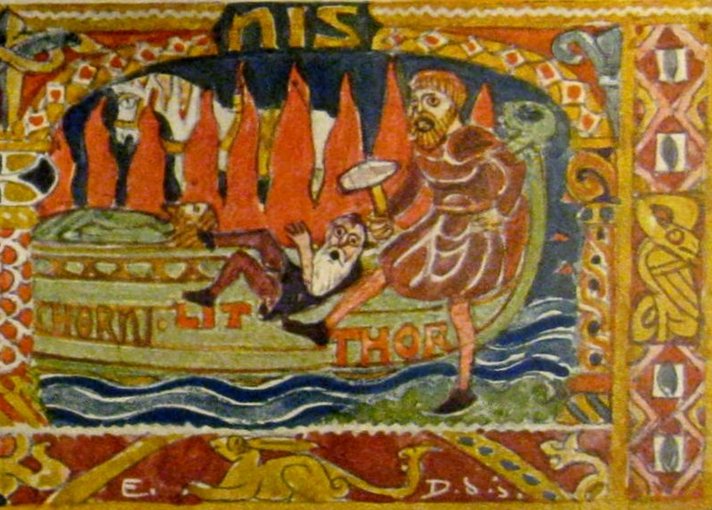
... According to Gylfaginning, following
the murder of Baldr by Loki, the other gods
brought his body down to the sea and laid him to
rest on the ship. They would have launched it
out into the water and kindled a funeral pyre
for Baldr but were unable to move the great
vessel without the help of the giantess
Hyrrokkin, who was sent for out of Jötunheim.
She then flung the ship so violently down the
rollers at the first push that flames appeared
and the earth trembled, much to the annoyance of
Thor. Along with Baldr, his wife Nanna was also
borne to the funeral pyre after she had died of
grief. As Thor was consecrating the fire with
his hammer Mjolnir, a dwarf named Litr began
cavorting at his feet. Thor then kicked [gaatu]
him into the flames and the dwarf was burned up
as well ... |
|
CLOSE TO THE
FULL MOON: |
|
OCT 8 |
9 |
10 (283) |
|
Al Shaula-17
ALWAID (Mother Camels) =
β
Draconis, MAASYM (Wrist) =
λ
Herculis
(265.1),
SHAULA (Sting)
=
λ
Scorpii
(265.3),
KUMA =
ν
Draconis
(265.6),
σ
Arae (265.9)
HAMAL (α
ARIETIS) |
RAS ALHAGUE (Head of the Serpent Charmer)
= α Ophiuchi
(266.1),
SARGAS = θ Scorpii (266.3),
μ Ophiuchi, π Arae (266.5),
NAN HAE (Southern Sea) = ξ Serpentis
(266.6), AL
DHĪLI (The Wolf)
= ω Draconis,
ι Herculis (266.7) |
λ
Arae (267.1),
GIRTAB (Seizer)
=
κ Scorpii,
ο
Serpentis (267.6),
DSIBAN (Wolf Pair)
=
ψ
Draconis
(267.9) |
|
Dec 11 |
12 (346 = 366
- 20) |
13 |
|
°Dec 7 (*261
= 9 * 29) |
8 |
9 (343 = 7 *
7 * 7 |
|
'Nov 14 (318) |
15 |
16 (*240) |
|
"Oct 31 (304) |
"Nov 1 (*225) |
2 |
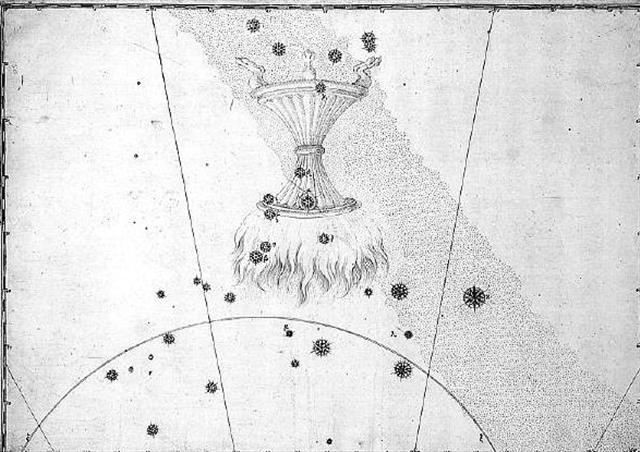
...
It is known that in the final battle of the
gods, the massed legions on the side of 'order'
are the dead warriors, the 'Einherier' who once
fell in combat on earth and who have been
transferred by the Valkyries to reside with Odin
in Valhalla - a theme much rehearsed in heroic
poetry. On the last day, they issue forth to
battle in martial array. Says Grimnismal (23):
'Five hundred gates and forty more - are in the
mighty building of Walhalla - eight hundred
'Einherier' come out of each one gate - on the
time they go out on defence against the Wolf.'
That makes 432,000 in all, a number of
significance from of old. This number must have
had a very ancient meaning, for it is also the
number of syllables in the Rigveda. But it goes
back to the basic figure 10,800, the number of
stanzas in the Rigveda (40 syllables to a
stanza) [40 * 270 = 10800] which, together with
108, occurs insistently in Indian tradition,
10,800 is also the number which has been given
by Heraclitus for the duration of the Aiōn,
according to Censorinus (De die natali, 18),
whereas Berossos made the Babylonian Great Year
to last 432,000 years. Again, 10,800 is the
number of bricks of the Indian fire-altar
(Agnicayana). 'To quibble away such a
coincidence', remarks Schröder, 'or to ascribe
it to chance, is in my opinion to drive
skepticism beyond its limits.'
...
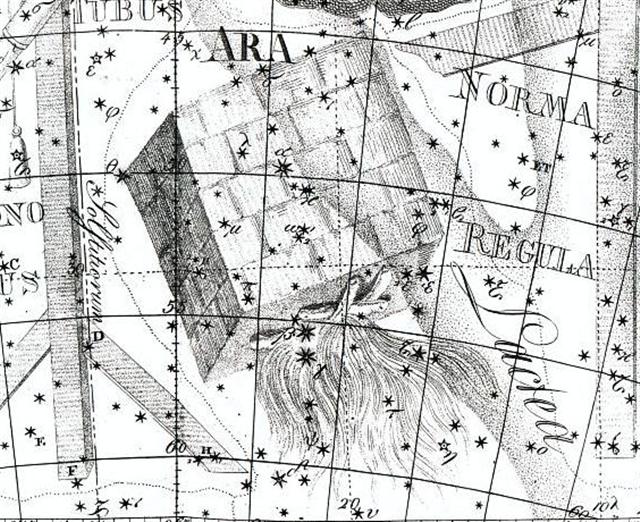 |
|











.jpg)

.jpg)


